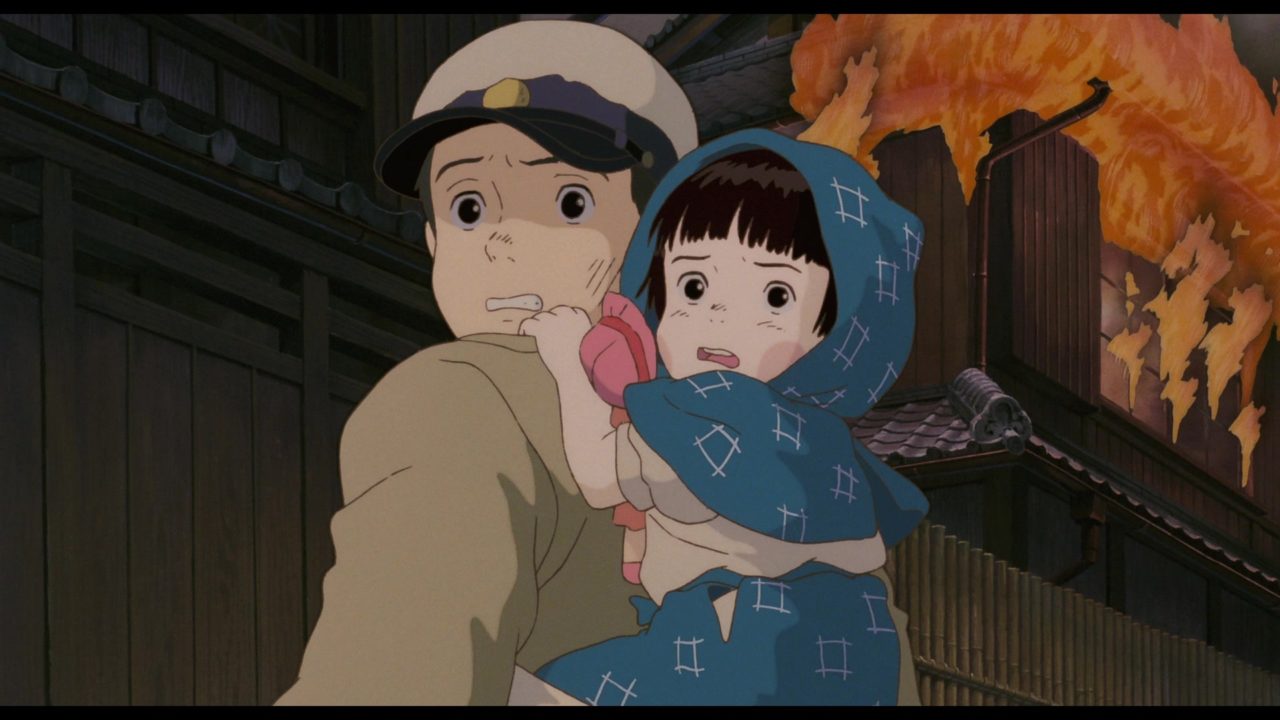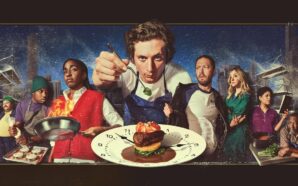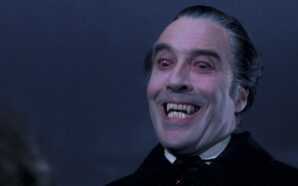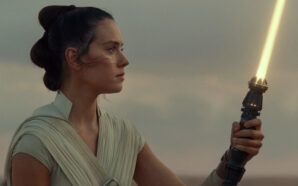This is part 7 of a series of reviews, looking at Studio Ghibli‘s films. You can find Parts 1, 2, 3, 4, 5 & 6, which look at Hayao Miyazaki’s, Yoshifumi Kondō’s & Gorō Miyazaki’s directed films, by clicking on the hyperlinks.
This is a difficult review to write. I’ve tried to keep my reviews free of spoilers so that anyone who, like me, has not seen these films before will be able to enjoy them after reading the review. These reviews serve as a record of my experience as a first time watcher and if they prompt others to watch and (hopefully) enjoy the films, I’m happy with that. This one is different.
If you don’t know about Grave of the Fireflies then I recommend that you don’t look it up. Don’t scroll past the picture in this article. Set aside an evening and watch it. The less you know, the better. If you know it, you know why I’m saying this. You’re in for a deeply impacting story with beautiful animation. Once you’ve watched it, then come back and read the rest of this review.
Seriously, just watch it but make sure you’ve nothing else to do that night because, well… You’ll see.

Seita & Setsuko – Grave of the Fireflies
It’s unique. I’ve never experienced a film like it. Grave of the Fireflies is special. The juxtaposition of the beautiful animation & score opposed to the crushing, unrelenting story is shattering. Utterly shattering. The emotional toll of the events as they unfold just builds and builds. Little, if anything, offers hope at all or for long. Every step of the way you cry out for a positive turn. For the day to be saved. Each time you’re flattened by the opposite.
I haven’t read the original short story upon which the film is based, I don’t think I’d be able to quite honestly. It’s much easier for me to put down a book than it is to look away from a beautiful, but thoroughly heartbreaking, animation. The short story, written by Akiyuki Nosaka, is semi-autobiographical and draws upon the lived experience of the author as WW2 came to an end. Isao Takahata, the director of the Studio Ghibli adaptation, also brought his own lived experience of that time to inform his version. As an example he mentions in an interview that he remembers the tin of sweets being incredibly rare at the time due to rationing so, while the tin is only mentioned once in the original short story, it features prominently in the film.
The film opens with the death of Seita, the main character, a teenager who tried and failed to save his own life and that of his younger sister. The film goes on to document the final months of Seita & Setsuko’s lives as they struggle to survive. Imperial Japan is losing the war badly but it continues to fight at almost any cost. As resources dwindle, cities burn, people die, on and on the fighting goes. The suffering of the civilians be damned.
Seita & Setsuko’s house burns down in an incendiary bombing raid; along with most of the town in which they live. Their mother dies, while their father is off fighting in the Navy, so they are sent off to live with a distant aunt. As conditions worsen, rationing gets stricter and the war draws nearer to its end, Seita & Setsuko find themselves unwelcome. Their aunt chastises them for not doing more to help provide, resents the past privileges afforded to them through their father being a Naval Captain, so they go it alone.
It’s difficult to watch. I recognise a lot of myself in Seita, I have a younger sister who I’ve always tried to look after and help. I have not always got it right nor will I always get it right in the future; but I will always try. I recognise the attitude he takes of “well, if I’m that much of a problem, I’ll just sort it out myself. I don’t need you.” I even understand where the aunt is coming from, trying to prompt him to help as much as possible for all their sakes but she goes about it the wrong way. Her approach drives a wedge between them, her resentment sends them down the wrong path with fatal consequences. Young teenagers were viewed very differently in that time, being expected to work etc. A situation exacerbated by the vast expense of people and resources spent fighting a war they were ultimately losing. It’s a horrible situation and one I hope to never find myself in.
The truth is, I’ve never had my emotions so thoroughly pummelled by a piece of “entertainment”. It’s so unrelenting and horrifying that I wasn’t able to cry until the credits started to roll. Once I started I couldn’t stop. I’m glad I watched it. It’s a harrowing reminder of the real cost of wars. The unintended victims. No matter how noble the cause or justified the reasons – innocent people always suffer. We would do well to remember that simple fact.
It’s lived with me in the weeks since I watched it. I don’t think I’ll ever be the same again.
Have you watched Grave of the Fireflies? Did you enjoy it? You can let me know @APTSnack in all the usual places.








